
The Types of Survey Questions You Should Ask - A Beginners' Guide
If you need answers, the best way to get them is through a well-presented survey. This guide will show you the types of survey questions you should ask!
Conducting an online survey is a great way of obtaining insights into how your business operates from the viewpoint of your customers.
Whether you are performing market research or gathering feedback for a new product, a survey can be a reliable and accurate source of information because it comes directly from the respondent.
The types of survey questions you ask can make or break your questionnaire, so before you can narrow down good survey questions to ask, you’ll need to know a little about your user base and their core experience for browsing the web. You’ll also need to keep them engaged as the average respondent tends to have a short attention span.
In addition, being sensitive to anything that could be ‘off-putting’ such as too many questions, a bad survey template or unclear wording, is standard practice to design an effective survey.
As such, this article will help you create a questionnaire from the ground up. We’ll cover the tools you need, tips on how to create surveys that drive a good response rate and more. First, we’re going to discuss the types of survey questions yours should include.
The Types of Survey Questions You Should Always Ask
A successful survey needs variety in order to get the answers you need to make the right decisions. You can use different types of survey questions to break up the survey and keep the respondent interested.
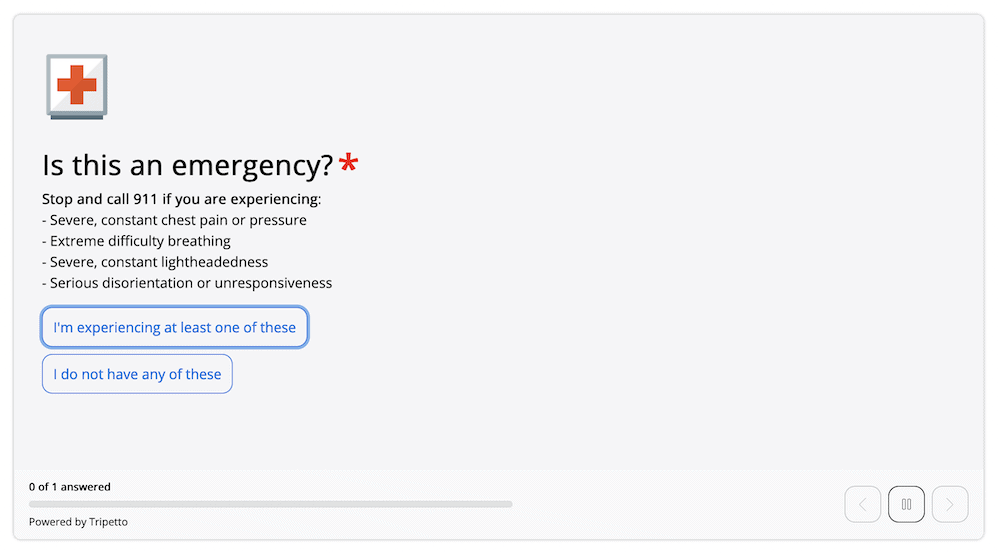
For example, a closed-ended question is the most common and straightforward type of survey question. This is where you ask for a simple (often one- or two-word) answer. This can be separated into two areas:
- Yes/No Questions. Otherwise known as ‘dichotomous questions’, these offer two answer choices. It will often be “Yes”, or “No”. Of course, the two answers can be anything opposing and logical.
- Multiple Choice. These types of survey questions expand on the number of answers, while still offering a rigid structure that gives away a narrow slice of information. Reviews are a common way of using multiple-choice questions.
The drawback here is that a respondent may want to give answer options not covered. In these cases, it’s common to provide a user space to type a custom answer. This brings us onto open-ended questions.
Open-ended survey questions are a big commitment for a respondent, because the onus is on them to provide a full answer. They’re more time-consuming, but provide some of the best insight you could obtain. In most cases, this type of survey question will offer a text box (or physical space) to write an answer, along with the encouragement to fill it.
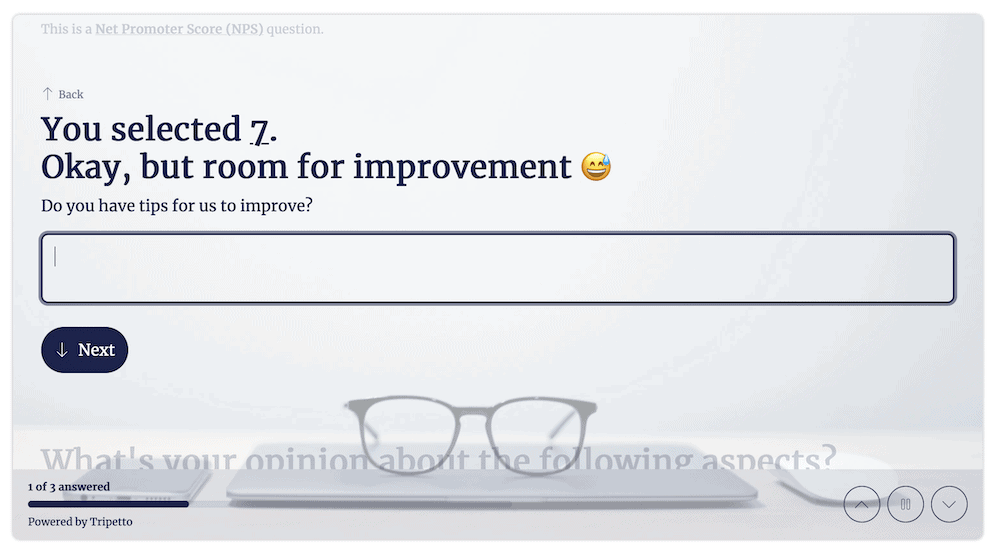
You can also expand on the multiple-choice question and give the respondent a point scale to work with. In lots of cases, this will be a 1–10 scale, but it could also be of the “Strongly Agree/Strongly Disagree” variety, or a Likert scale. If you plan to use this type of question in your survey, it’s good to stick with it throughout, rather than switch the structure around.
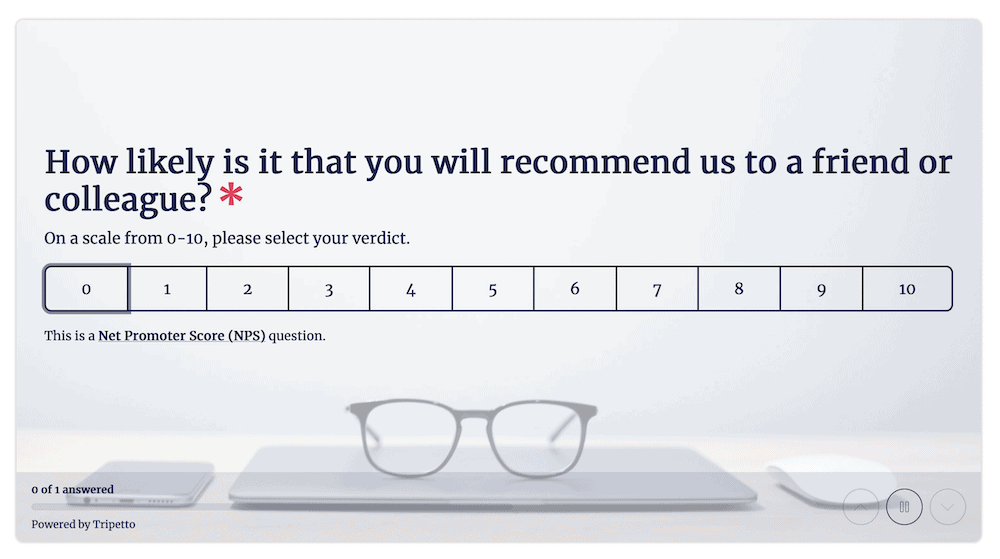
The final type of question is where the respondent ranks given options. In lots of cases, they may not provide any insight at all. This is because the respondent will need to know enough about every option you provide, and have the skill to rate and rank them. Because of the high-risk type of question, rankings shouldn’t be used often unless you have customer insight that gives value to the answers.
How to Create a Successful Survey
Much like many other aspects of marketing, a successful survey relies on some basic fundamentals. This should be a part of your planning, and without this step, your survey may be incoherent, inefficient, and lacking in value.
Our approach is to conduct a self-survey! We have five open-ended questions that will help you determine the focus of your survey and what constitutes a successful one:
- What is the objective or purpose? Here, decide what sort of information you want to receive. For example, do you want some general feedback on your service or products, or do you need specific information on a new campaign?
- Who will the target audience be? The type of survey you create will be based in part on the target audience and demographics. If you expect existing customers to answer the survey, it might focus on customer satisfaction, while for internal employees the focus may be on engagement with upper management.
- How will you use the respondents’ answers? This is more relevant for sensitive questions asking respondents to share pieces of personal information. It determines whether or not you will need to put confidentiality or other protections in place.
- Will you set a time limit for submission? Of course, if you need a quick turnaround on your surveys, using an open-ended question format isn’t going to be viable. Though, you may want to let the respondent save their answers for a later date.
- How detailed do the answers need to be? This is going to be a big factor on the types of survey questions you use. Ranked or closed-ended questions will provide less detail than open-ended.
Once you have the answers to these questions, you’ll also have a good idea of how your survey will shape up. It could also be that you have an idea of layout and the specific questions themselves.
Of course, we can’t tell you exactly what questions to write, as this is based on your own desires, customer base, and business.
Though, we can help you start to piece your survey together. Let’s take a look at this next.
How to Create a Viable Questionnaire That Gets Results
By now, you’ll have a clear focus for your questionnaire, and maybe some questions to ask. If not, you’ll need to create the template and find questions to suit. If you do have some questions, the goal is to find the right place to slot them in and work them into a viable ‘shape’.
In order to achieve both of these tasks, you’ll need a structure. It’s good to think of a few typical practices that achieve good results time and time again:
- Ask one question at a time. You may be tempted to ask a question such as, “Do you like the product, and would you recommend it to a friend?” Instead, split this into two distinct questions to get better answers to both.
- In fact, we can make this type of survey question less leading, which is another important aspect. Here, we could ask “What is your opinion of the product?” and offer a multiple choice question for the respondent.
- Remember to ask questions first and foremost, rather than ask the respondent to confirm statements. Questions formed as the latter can often bias the survey response; we all tend to agree with statements rather than disagree with them.
- This also brings up how variety in your questions can help you get the right answers. Don’t be afraid of using different question formats for every question (if possible). The most important goal is to get the answers you need.
- Keep your questions specific and simple. Basic, conversational wording is fine, and the respondent will appreciate it more.
With this in mind, also be wary of ‘survey fatigue’. You don’t want a respondent to abandon the questionnaire half way through, so look to time the survey responses during testing. We believe 8–10 questions is a good number – about five minutes in total. You could also make some questions optional, to keep the time down. The less you ask of the respondent, the more likely they will complete your survey.
Moving onto the questions themselves, it’s a good idea to write the mandatory ones first. This way, you’re building the foundations for your survey, and can make sure you’re getting the most important answers. From there, you can write up the secondary questions, then the minor optional ones.
We’d also recommend to forget about asking for personal information if it’s not a vital requirement for your survey. You could make these types of survey questions optional, but it’s better to restrict them altogether.
How Tripetto Can Help You Create Successful Surveys
In order to create a quality survey, you need a good-looking layout as well as ‘on point’ questions. This is where Tripetto’s premium solution can assist you.
Thanks to its robust set of customization options, you can make sure that your survey is on brand and easy to digest. What’s more, you can optimize the display and design for mobile, desktop, tablet, and every screen in between.

Tripetto is also flexible to your needs, as it adapts to different types of survey questions using ‘form faces’. This is a process where the underlying form data can be presented as different layouts, such as a typical form, a chat window, and more. This means you can find the right question type, present it in an optimal way, and increase your conversion rate.
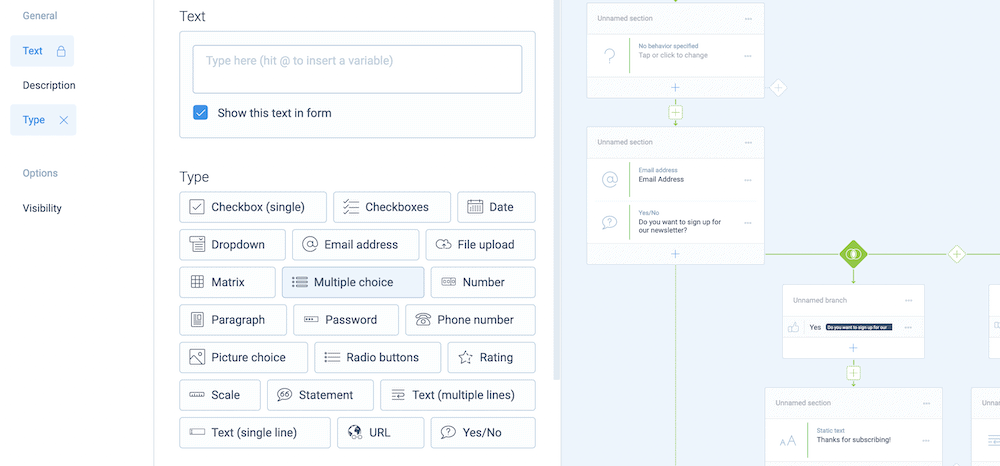
Your team can also keep tabs on the responses that come in thanks to a comprehensive notification system, and connections to over 1,000 other services. Regardless of whether you use Zapier, Make, Pabbly Connect, or even custom webhooks, you’ll be able to grab any and all notifications.
For example, you’re able to use email or Slack to receive a notification whenever a survey is submitted.
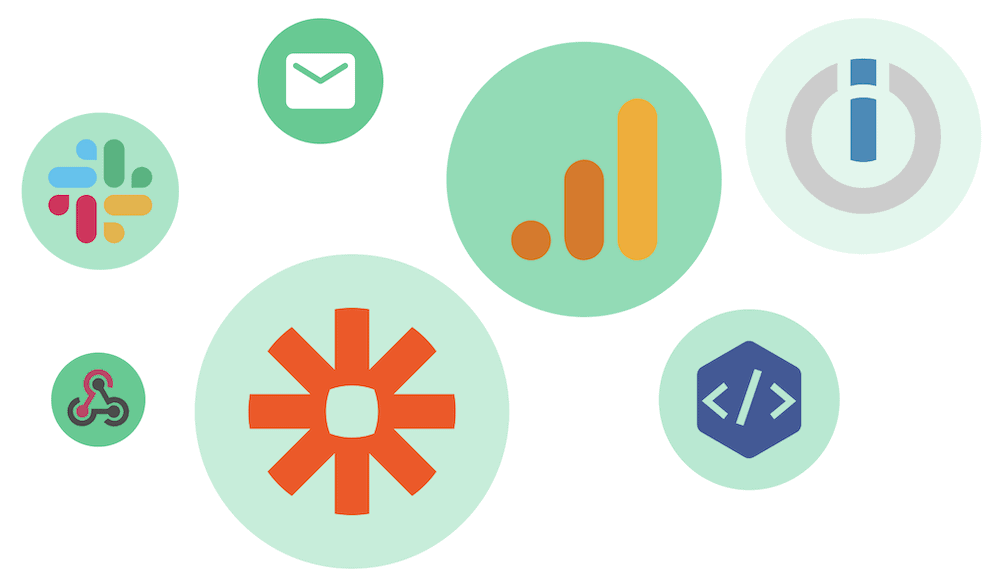
What’s more, you can export survey results to a CSV file, which means you can import them into a whole host of other applications and create detailed reports from your raw data.
Tripetto starts at $99 per year for a single site, and this includes unlimited form building, priority support, lifetime updates, the ability to remove the Tripetto branding, and much more!
Quick Tips to Help You Create Better Surveys
Before we wrap up, we have a couple of quick tips to help you create better surveys in the future. These aren’t about the structure and types of survey questions themselves, but about the presentation and your own organization:
- First, keep a ‘question database’ of every question you create – not just those you ask, but the discarded ones too. This way, you can filter them, repurpose some for a new survey, and much more.
- We recommend making your survey friendly to smaller format devices, such as mobile. Lots of users browse using small-form screens, so you want to make sure they have every incentive to complete and submit your survey.
Of course, if you use a solution such as Tripetto, you have tools to achieve a great-looking and captivating survey that’s responsive to specific devices. It’s one load off of your mind, and the spare processing power can go into making your survey questions rock-solid.
Conclusion
There’s almost no better way to find out what your users or team thinks about your products, services, and working practices than a survey. However, throwing a bunch of poorly-worded and haphazard questions at your respondents is going to give you sub-standard results. You’ll need to plan and research to make sure you ask the right types of survey questions that will give you optimal answers.
Once you keep a few typical practices in mind and decide on the focus for your questionnaire, you can build the question structure accordingly. From there, you can use a solution such as Tripetto to build your survey layout and make sure every respondent can complete and submit the questionnaire regardless of their device.
Tripetto could do wonders for your forms and users. We’re waiting to help you, with a no-risk, unconditional 14-day money-back guarantee on all purchases!

